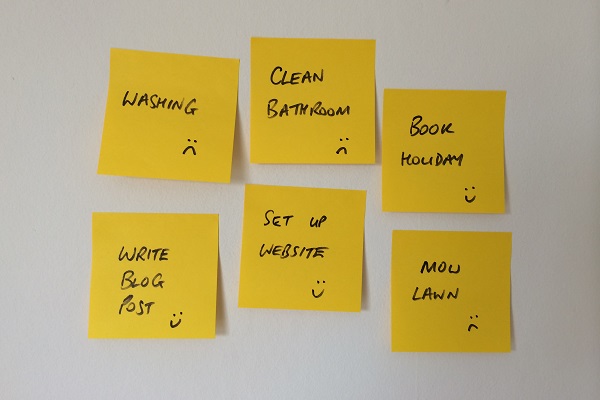“Doing things you don’t enjoy reduces your effectiveness.” – Jim Benson and Tonianne DeMaria Barry in Personal Kanban
I agree: aren’t you much more effective when you are doing things that you find fulfilling and are doing them with people you like? I know I am. I also agree that there is an overhead when it comes to doing things one doesn’t enjoy: my wife will testify to my moaning that goes with housework.
To address this, Benson and DeMaria Barry suggest an easy metric they call Subjective Well-Being. This is “a psychological concept and a qualitative measure that gauges an individual’s current mental state” by identifying what impacts their mood. This has a two-fold effect: firstly it highlights that these are just tasks that are affecting us emotionally; secondly it helps us identify the effect and helps us improve our life.
However, finding patterns can be difficult. They suggest adding a smiley or sad face when you complete jobs that drew an extreme reaction from you, then putting them in a separate Subjective Well-Being (SWB) box. Then, in order to work out how to improve your happiness and productivity, ask yourself questions like “should I delegate / refuse similar tasks?”, “how could I have approached the task differently to increase the chance of success / my enjoyment of it?”, and “how can I increase the types of tasks that make me happy?”
You could easily translate this to your working agile world: there’s nothing stopping you adding a happy or sad face to tickets as you move them to “Done”, or asking questions about each story like the ones above – they’ll give you some interesting points for your retrospectives.
Inspired by Personal Kanban: Mapping Work / Navigating Life by Jim Benson and Tonianne DeMaria Barry.
